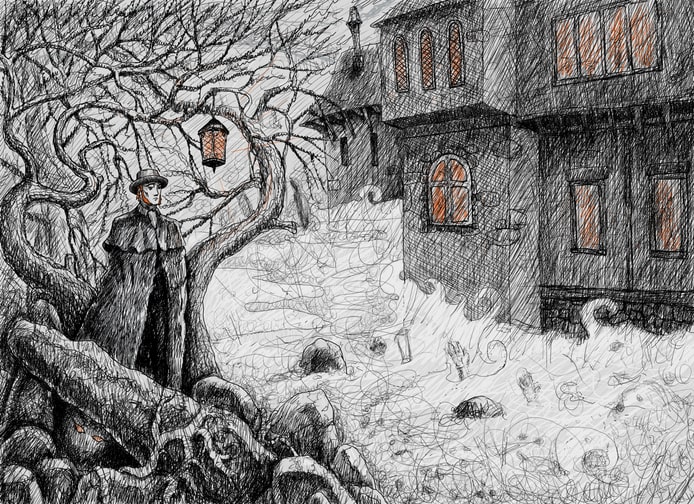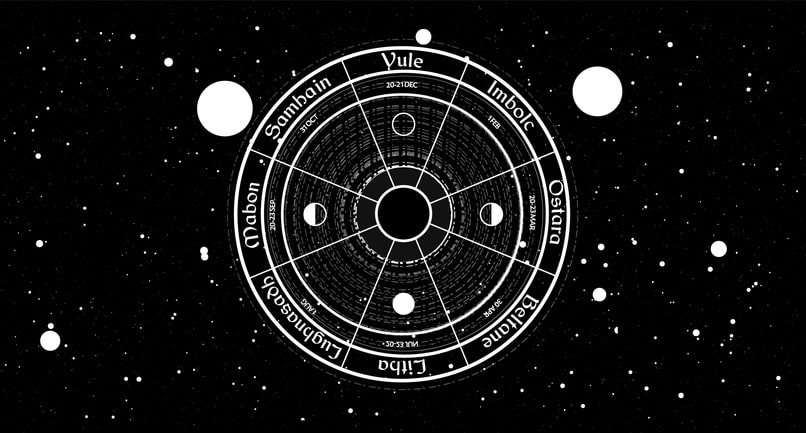Celebrating Samhain: Meaning & Traditions


Samhain, pronounced “sah-win”, is also known as the Witches’ New Year. It is a significant festival at summer’s end, celebrated by people around the world. The origins of Halloween, a favorite American holiday, are also found in Samhain celebrations, connecting these pagan traditions to modern fun.
Coming from ancient Celtic traditions, Samhain marks the end of the harvest season and the beginning of winter. In this article, we will explore the rich history, traditions, and significance of Samhain, and delve into the fascinating customs associated with this festival.
The Origins of Samhain
Samhain has its roots in ancient Celtic culture, specifically among the Celtic people of Ireland. It was considered a time of transition, when the boundary between the worlds of the living and the dead became blurred. The Celts and druids believed that during Samhain, the spirits of their ancestors would return to the earthly realm, and they would light bonfires and leave offerings to honor and appease these spirits.
What Does Samhain Literally Mean?
Samhain literally means "summer's end" in Gaelic and modern Irish. It is a festival that marks the end of the harvest season and the beginning of winter or the dark half of the year in Celtic traditions.[1]

Samhain Customs and Traditions
Various rituals and practices are performed during Samhain to honor the ancestors and embrace the spiritual significance of the festival. Wiccans and modern pagans often celebrate Samhain as the "Witches' New Year" and perform rituals that involve honoring loved ones who have passed away, divination, and communing with the spirits of the Otherworld.
They believe that the veil between the worlds is at its thinnest, allowing for easier communication with departed loved ones. Some Wiccans hold ceremonies known as Dumb Suppers, where a meal is prepared and shared in silence to honor those who have passed. These rituals serve as a way to remember and connect with ancestors, seeking their guidance and wisdom during this sacred time of year.
How Is Samhain Celebrated?
Samhain is celebrated in diverse ways, depending on specific Celtic traditions and cultural practices.[2] Let's explore some additional customs and practices associated with this ancient festival:
-
Lighting Bonfires: Kindling fire during Samhain not only symbolizes warmth but also serves as a means of protection against the encroaching winter darkness. The flames dance and illuminate the night, providing a sense of comfort and security.
-
Honoring Ancestors: Samhain is regarded as a time when the boundary between the living and the dead is at its thinnest. This presents an opportunity to pay tribute to ancestors who have passed on. Rituals and offerings are made to honor their memory and seek their guidance and blessings.
-
Divination: Practitioners believe Samhain to be a mystical time when the veil between the physical and spiritual realms is lifted. This makes it an auspicious time for divination, where people seek insight into the future or gain a deeper understanding of their present circumstances. Various divination methods such as tarot reading, scrying, or casting runes are practiced during this time.
-
Costumes and Masks: In addition to the spiritual significance, Samhain is also associated with the belief that malevolent spirits roam the world during this time. To protect oneself from these mischievous entities, people traditionally wear costumes and masks. This not only serves as a disguise, but also confuses and wards off any negative energies or spirits.
-
Feasting and Sharing Food: As a celebration of the harvest season and a way to strengthen community bonds, feasting and sharing food play a significant role during Samhain. Families and friends come together to enjoy hearty meals, showcasing the bountiful harvest and expressing gratitude for the abundance of nature.
These are just a few examples of the rich tapestry of customs and practices that are associated with Samhain. It's important to note that the observance of Samhain can vary greatly among different regions and Celtic traditions, each adding its own unique elements to the festivities.
Samhain and Halloween
The festival of Samhain and the modern holiday of Halloween share a deep historical connection, between Samhain rituals and American and European traditions.
The church transformed the festival of Samhain into three days of celebrations: All Hallows’ Eve on October 31st, All Saints' Day on November 1st, and All Souls' Day on November 2nd.[3] These adaptations of the Samhain traditions by the Christian and Catholic churches led to the evolution of contemporary Halloween.
Over time, Halloween evolved into a mix of pagan and Christian traditions, creating the modern holiday we know today. This blending of beliefs and practices allowed for the continuation of ancient customs while also providing a new context within the framework of Christianity.
Pumpkins, Trick-or-Treating, and Costumes
One of the most well-known customs of Samhain is the carving of pumpkins into Jack-o’-lanterns. This tradition originated from the Celtic practice of carving turnips and placing a candle inside to ward off evil spirits. Today, pumpkins have become synonymous with Halloween and are often intricately carved and displayed as festive decorations.
Another popular tradition associated with Samhain is trick-or-treating, where children dress up in costumes and go door-to-door, collecting treats from neighbors. This tradition has its roots in the belief that disguising oneself would confuse and protect against malevolent spirits. It has evolved into a fun-filled activity enjoyed by people of all ages.
Samhain Around the World
Although Samhain originated with the ancient Celts, similar festivals and observances exist in other cultures as well.
In America, Halloween traditions brought by Irish immigrants in the 19th century became popularized, including the use of Jack-o'-lanterns and costumes. In Scotland, the festival is known as "Hop-tu-Naa" and incorporates unique customs such as the carving of turnips instead of pumpkins.
These variations of Samhain celebrations highlight the global significance and enduring appeal of honoring the cycle of life and connecting with the spiritual realm.
Samhain’s Modern-Day Significance
Samhain continues to be celebrated by modern pagans and Wicca practitioners as one of the eight Sabbats, or seasonal festivals, in the Wheel of the Year, along with other seasonal festivals like Imbolc, Beltane, and Lughnasa.[4] It is seen as a time for introspection, honoring the past, and preparing for the coming winter.
Additionally, Samhain has become a time for people of various spiritual practices to connect with their spirituality, explore ancient traditions, and celebrate the beauty of the changing seasons. It serves as a reminder of the importance of embracing our connection to nature, our ancestors, and the cycles of life and death.

Summing Up Samhain
Samhain is a captivating festival that carries with it a rich history and a tapestry of fascinating traditions. From its ancient Celtic origins to its modern-day celebrations, Samhain continues to captivate people around the world with its mystical allure, making it a cherished time of year for those who embrace its traditions.
Whether you celebrate Samhain for its historical significance, its spiritual connections, or simply for the joy of dressing up and indulging in sweet treats, this festival reminds us of the cyclical nature of life and the importance of honoring our ancestors.
So, as the autumn leaves fall and the air turns crisp, it’s time to embrace the magic of Samhain and welcome the arrival of winter with open hearts and open minds.
And if you want to dive deeper into the world of pagan holidays, why not test yourself with our quiz, Can You Match These Pagan Holidays to Their Modern Counterparts? Plus, check out our list of the 50 Spookiest Halloween Quotes to get yourself into the mood for scares!
People Also Ask...
Do you still have some questions about Samhain, its traditions, and how people celebrate it? You’re not the only one! That’s why we’ve compiled answers to some of the most common Samhain questions below.
What Is Samhain and How Is It Celebrated?
Samhain is a Gaelic festival that marks the end of the harvest season and the beginning of winter. It is a time when the boundary between the worlds of the living and the dead is believed to be thin. During Samhain, people would light bonfires and wear costumes to ward off evil spirits.
Is Samhain Different From Halloween?
Though related, Samhain is different than Halloween, in both religious aspects and calendrical placement. Halloween, as we know it today, has its roots in the ancient Celtic festival of Samhain. Over time, various customs and traditions associated with Samhain merged with Christian observances, giving rise to modern Halloween celebrations.
What Are Some Samhain Traditions?
Samhain traditions include carving pumpkins into jack-o-lanterns, wearing costumes, trick-or-treating, lighting bonfires, performing rituals to honor ancestors, and divination practices.
About the author







